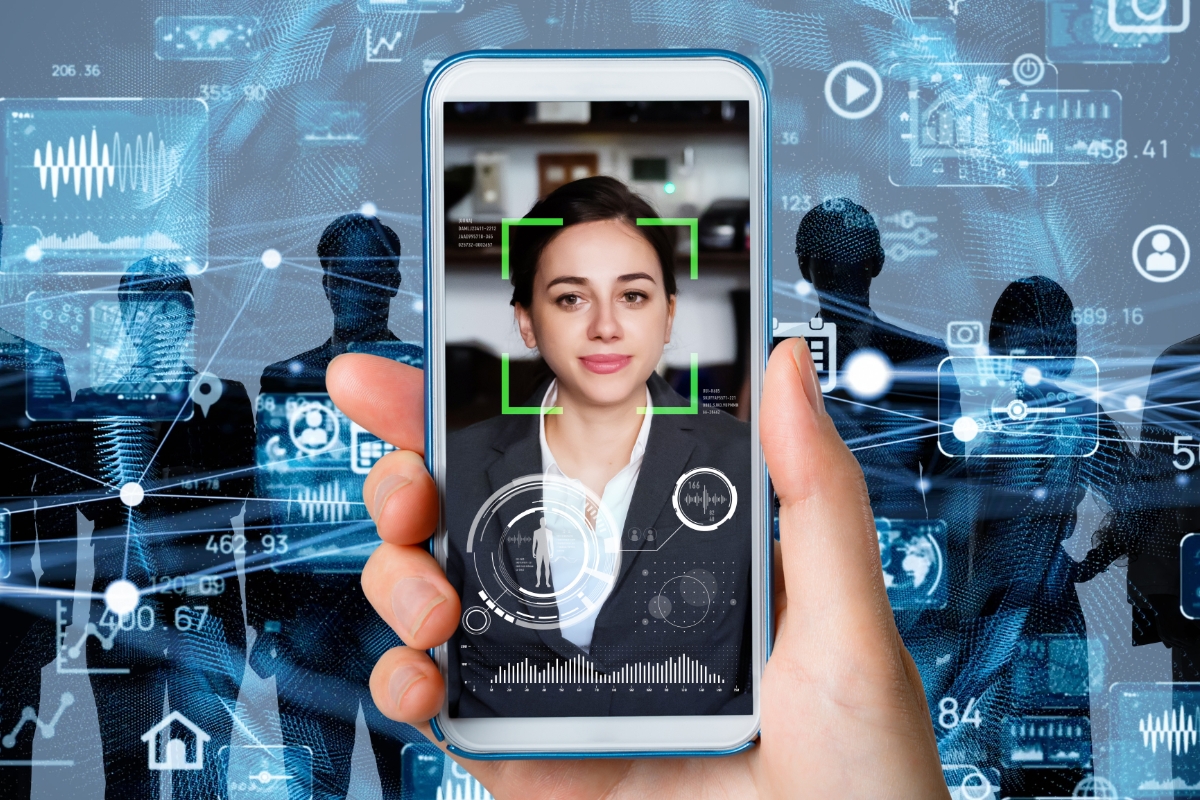
How Does Facial Recognition Work?
Facial recognition technology has become increasingly prevalent in our daily lives, from unlocking smartphones to enhancing security surveillance. But how does this technology work?
This article will explore how facial recognition works and highlight the primary environments where it delivers significant benefits.

What is Facial Recognition?
Facial recognition is a biometric technology that identifies or confirms a person using their unique facial features.
How Does Facial Recognition Work?
Unlike traditional identification methods like passwords or ID cards, facial recognition uses complex algorithms to identify key facial details from an image or video, such as the distance between the eyes, the shape of the jawline, the contour of the cheekbones and other specific features.
The mathematical information is then compared to the data of known faces in a database. Once a match is found within a set confidence level, the identity is verified.
You may wonder how the system can recognise the same face in different poses. It does this through an alignment process. Various techniques can be used to extract facial features and compare them. These include computer vision, probabilistic analysis, machine learning and deep learning.
Is Facial Recognition Secure?
Reputable facial recognition providers will adhere to the strict legal requirements of data protection laws and any legal acts relevant to their business sector. For data to be secure, it must be encrypted end to end, from the device performing the scanning to the storage of that data.
Furthermore, the data must be encrypted when it is moved between systems and devices. A reputable provider will adhere to this standard requirement.
Providers will also implement several policies to safeguard your data. This includes:
- only storing data about your face, and not an image, so that your image is difficult to recreate
- only saving data for as long as necessary
- ensuring only very secure and authorised systems have access to sensitive data
- only allowing authorised persons to have access to those systems
- tracking where and when the data is accessed
- minimising the amount of data collected
What Are The Benefits of Facial Recognition?
Fast Identity Verification
Facial recognition systems can provide fast identity verification in environments where speed and efficiency are crucial. Scanning a face in an airport, bank, or even retail checkout can allow the system to quickly cross-reference the image with a database, providing an almost instant confirmation. This rapid verification process helps to streamline operations, reduce queues and enhance overall user experience.
User Friendly
Unlike other forms of biometric authentication, such as fingerprint scanning, facial recognition is non-invasive and requires minimal user interaction. It also doesn’t need passwords or PINs to unlock various applications, like authorising smartphone payments, making it an attractive alternative for many who frequently forget their passwords or PINs.
Time Tracking
Face recognition systems offer significant time tracking benefits, eliminating manual punch-ins and reducing buddy punching, whereby employees clock in for one another if one is running late or wants to leave earlier than allowed. By automating the attendance process, facial recognition can enhance accuracy and reduce administrative burdens to ensure compliance with work hours. This automation works seamlessly with other HR software, allowing for accurate tracking and reporting, ultimately improving workforce management and operational efficiency.
Security
Security is one of the primary reasons facial recognition technology has gained so much traction. As it relies on unique facial features, which are difficult to replicate, it offers a higher level of security than traditional methods like passwords or ID cards. Facial recognition systems can also be integrated with other security measures, such as surveillance cameras, to monitor and identify potential threats in real-time, making them a powerful tool for protecting sensitive areas and information.

Industries That Benefit From Facial Recognition Systems
Facial recognition systems are used confidently in a wide range of industries.
Security and Law Enforcement
In security and law enforcement, facial recognition systems have become crucial for identifying suspects, tracking persons of interest, and even locating missing individuals. Their ability to integrate with other security measures like surveillance cameras can scan crowds efficiently in real-time, allowing for quick identification of known criminals or flagged individuals. This can help not only to prevent crimes from occurring but also solve them faster. This technology works effectively in environments like border control, giving security an additional layer of surveillance to identify travellers who may pose a security threat, enhancing their national security efforts.
Finance
Banks and financial institutions are slowly incorporating facial recognition systems into their ATMs to verify customers’ identities during transactions. This system will protect these ATMs with a robust layer, making it much harder for unauthorised individuals to access accounts or sensitive financial information. Not only this, it will also allow customers access to cash without cash cards at the machine, for their identity will be confirmed simply by scanning their face. This can prevent debit cards from getting lost and stolen.
Travelling Access Control
Airports worldwide have adopted facial recognition systems to speed up the check-in and boarding process. By placing their passports on the scanner, passengers can verify their identity in seconds by looking at a camera, reducing the need for multiple checks. This helps to speed up the process and reduce the likelihood of human error. In some cases, facial recognition is also used to automate customs and immigration procedures, further streamlining travel.
Retail and Marketing
Retailers can use this technology to recognise returning customers and tailor services and offers based on previous purchases or preferences. This level of personalisation can significantly enhance the call to action from customer satisfaction and loyalty. It can also be used to analyse customer demographics, such as age and gender, to provide targeted advertising, increasing the effectiveness of marketing campaigns. Additionally, facial recognition can prevent shoplifting by identifying known offenders as they enter the store.
Healthcare
Hospitals and clinics are improving their care and security by using facial recognition systems to verify patient identity. This ensures that medical records are correctly matched to the right individual, minimising the risk of medical mistakes caused by human error. It also monitors patients with dementia or other memory-affected conditions, ensuring they receive the care they need. Facial recognition can also serve as a cost-effective solution by cutting administrative tasks, as it streamlines check-ins and appointment scheduling, reducing the need for human involvement and interaction.
Our New World
We live in a world where the technology once portrayed in film is now available. Facial recognition systems have been used for some time, and society continues to benefit from them. As previously mentioned, reputable providers take security seriously and will deliver secure systems where the benefits of facial recognition can be relied upon without excessive threat to security.
For time and attendance systems, contactless clocking and fast, accurate recognition speeds add to the security and efficiency of the organisation where these systems are in use. No two people have precisely the same face; the face cannot be lost, and there is no touching of the system, meaning they are hygienic.

Zoë Mouter is the joint owner and director of Egress Systems, a leading provider of time and attendance solutions. With two decades of experience in the workforce management sector, Zoë collaborates with HR, payroll, and IT experts to deliver tailored solutions across a diverse range of industries, including logistics, manufacturing, retail, hospitality, education, charities, waste management, and healthcare.
Before founding Egress Systems, Zoë honed her skills over 10 years as an IT professional at global data and technology companies Experian and Egg. During this time, she worked with multinational clients such as MBNA, Morgan Stanley, and Argos, specialising in the credit card processing sector.
Zoë holds a first-class degree in English Language and Literature from Liverpool University, alongside a Masters in Viking Studies and a TEFLA certification (Teaching English as a Foreign Language to Adults). While her focus has shifted from Viking history to Nordic walking, she enjoys expressing her creativity through ceramics, often crafting unique tea and coffee pots on her pottery wheel.
